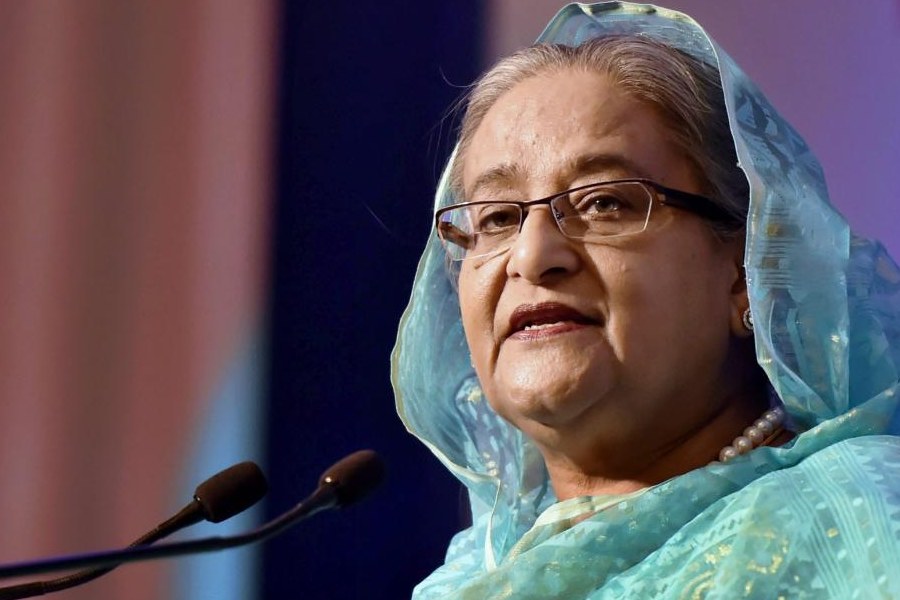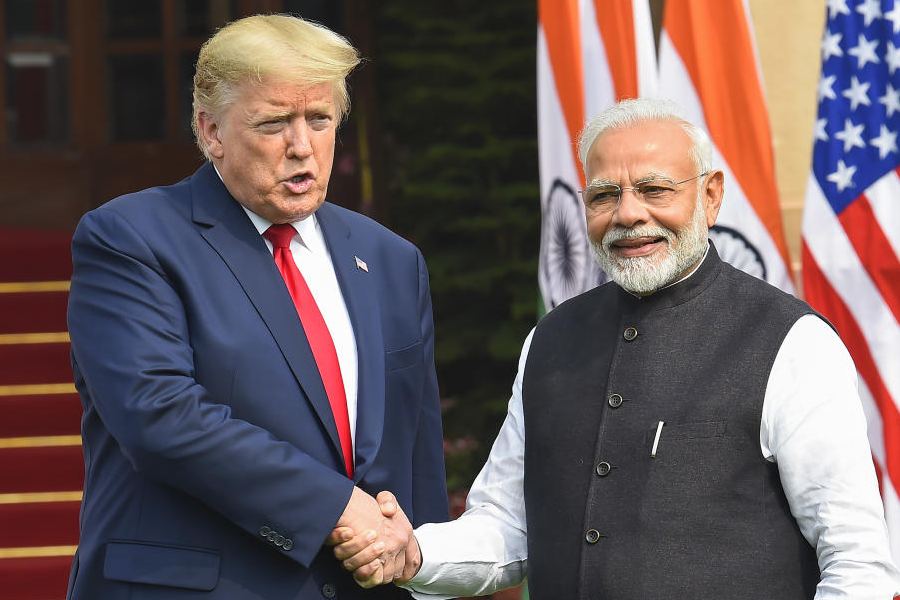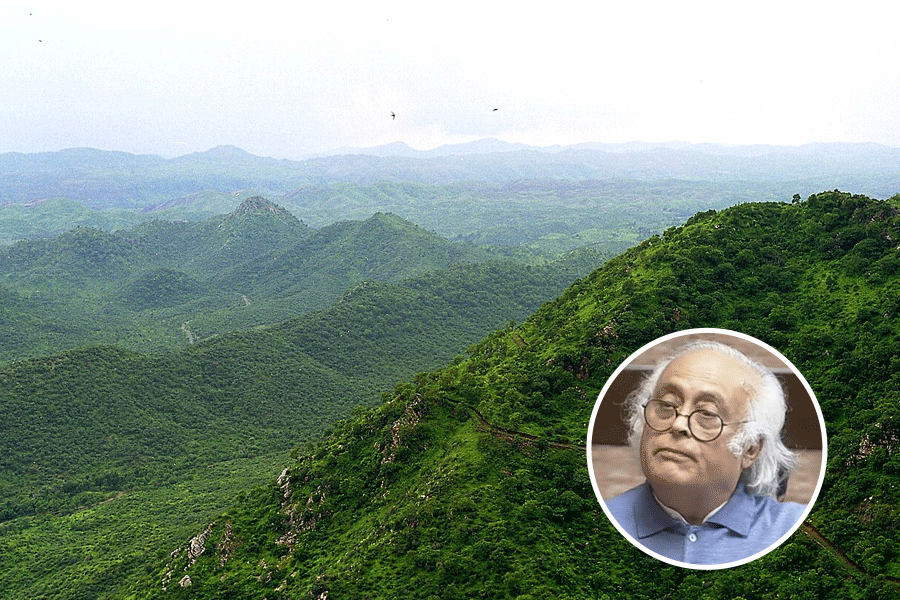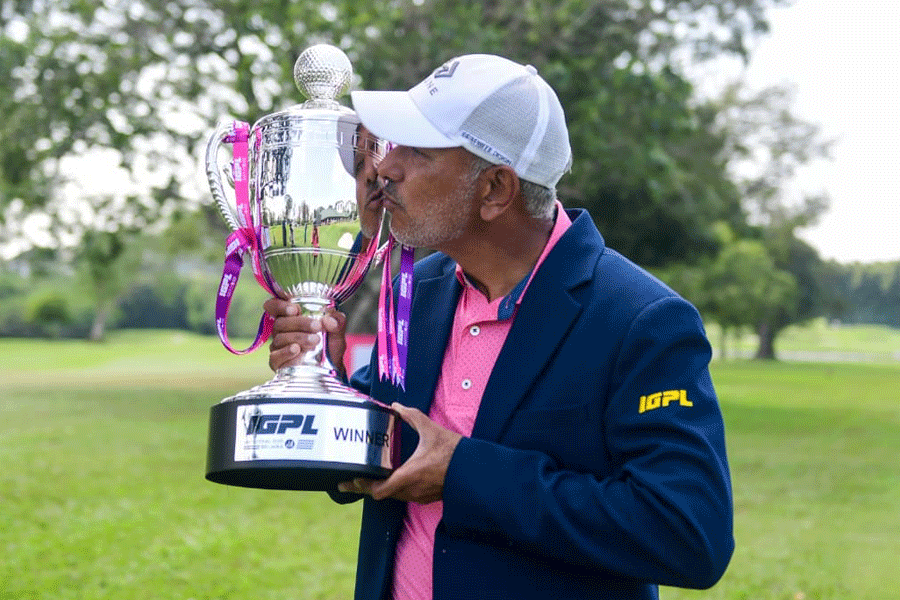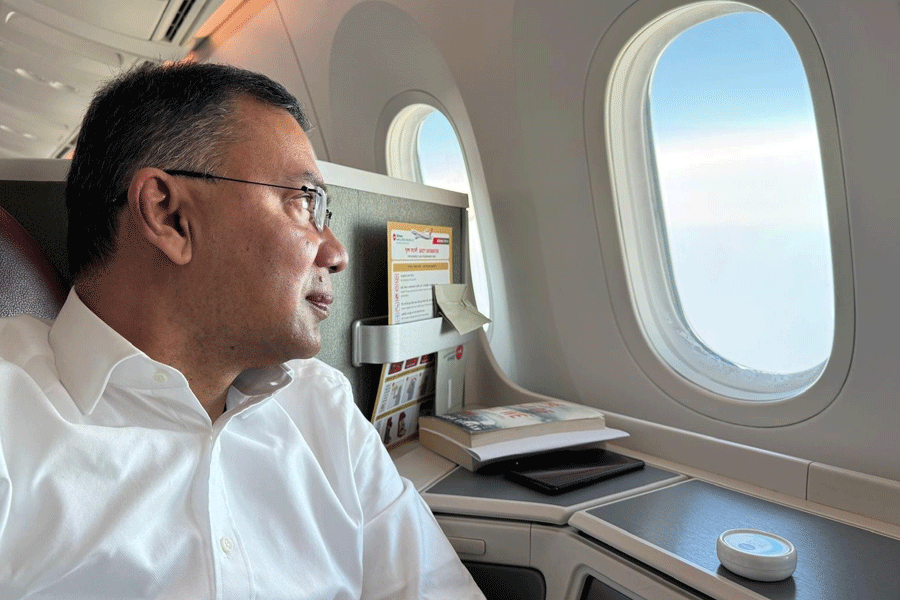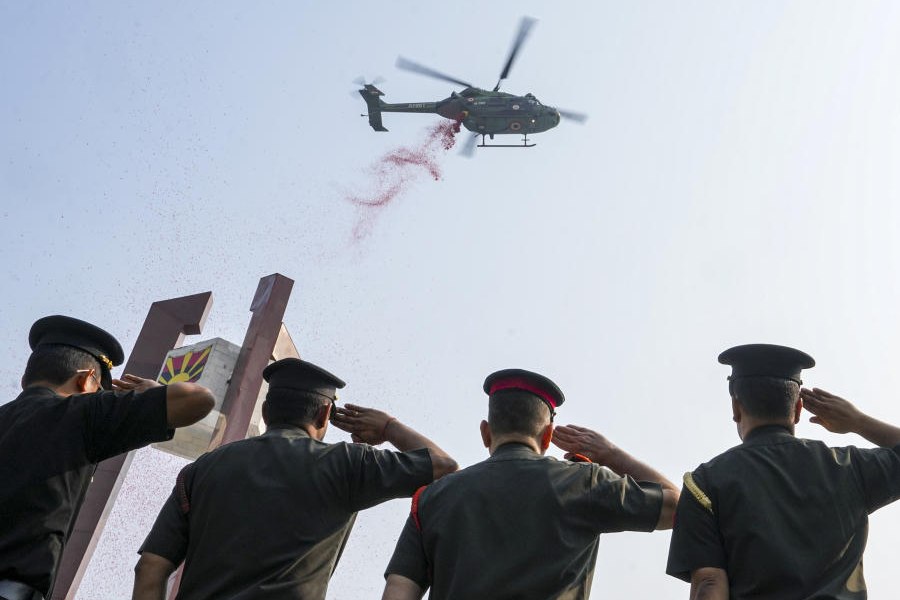On board the Maitree Express from Calcutta to Dhaka, April 14: A hot wind from clanging wheels sweeps the grass behind the iron mesh of fencing and an inter-Bengal border is cleaved this morning.
It has taken 43 years.
On no-man’s-land between India and Bangladesh the grass is still green on the other side of the fence. The fence is new. An express called friendship passes between its pillars. The pillars are dug parallel to the tracks. They hold up the iron mesh that fences in the railroad. The tracks on which the train runs are new. The hopes the train carries are vintage.
The seven cars of the Maitree Express from Calcutta are carrying only 65 passengers. They are meant to carry about 400. The train from Dhaka to Calcutta which we shall cross at Darshana is much more crowded, its passengers wave wildly, some hold out their hands to touch the hands of the passengers on this train. The railway staff say it is carrying 336 passengers.
But that reveals itself later after the formalities on the Bangladeshi side of the border. For now, the few men and women in the Dhaka-bound train look hard through the windows as it crosses the border, not missing a palm tree, not missing a blade of grass, taking in the glint from the barrel of the gun in the hands of an Indian border guard, scanning the bold prints on the Bangla sentry’s uniform.
An express called friendship has found a way through the fence. If good fences make for good neighbours, here, as the train is rolling in slow motion almost into Bangladesh, New Delhi and Dhaka are taking a small step.
It is a huge leap for a whole people.
In seat 41 of the air-conditioned chair car, Nihar Ranjan Saha, retired pharma company employee from Jodhpur Colony, Prince Anwar Shah Road, stops in the middle of his good-natured argument with catering manager Shekhar Mukherjee. He wants hilsa for lunch but was being offered only rohu. But now lunch can wait because he wants to savour the moment of the border-crossing.
Nihar Saha left his village Raghukosh in Dhaka district on March 13, 1950, when he was a Class IV student. For 14 years after that he used to take the train because his father, a paramedic, returned to their village with his mother. Nihar Saha says he last went to Bangladesh by train in 1964, a year before it was stopped. But he has been visiting his village again since 1980 and was in Dhaka in December last year.
Rongolal Choudhary of Baguiati-Keshtopur, retired income-tax officer, pulls wife Amita closer to the window on the right. “This is zero line,” he tells her. “There is the Bangladesh Rifles post,” he turns and points up front.
Through the window a little white pyramid that is the last — or first — border pillar on the Indian side is sprinting away. Other than that, and the incomplete fence, there is little that distinguishes the end of one national territory and the beginning of another.
Still, Amita Choudhary finds a distinguishing feature as the train glides into Darshana, the first — or last — station in Bangladesh. It is a tree on the brown platform on her side. “See, see,” she nudges. “That’s a Bangladeshi jackfruit tree.” It is fully laden, its boughs bent, the fruit ripe and looking like they should cease defying the law of gravity.
“I came to India in the clothes I was wearing,” Rongolal Choudhary recounts. “It was August 14, 1964.” He was 17 years old, born in the year of Partition and Independence, 1947. “My elder sister — didi — stayed on. She married there, in Munshiganj district’s Kalindipara village. Her name is Sobha Pal. I am going back after 44 years.” Among the gifts he is carrying are cakes of Dove soap and “didi also likes Boroline”.
The first Indian passenger train to Bangladesh and to Dhaka — a distance of 372km — is running in remembrance of things past. Without a shade of doubt, its symbolism is greater than the distance it will cover. Bangladesh was not born at the time of the last passenger service to this side of Bengal. In 1965, it was still East Pakistan and war was just breaking out.
The memories that the train to Bangladesh evoke are distinct from the trains that ran the rivers of blood at the time of Partition between the two Punjabs. There, Hindus and Muslims killed the passengers. Coaches full of bloodied bodies pulled into stations on either side of that border, inciting more violence.
In contrast, the East Bengal Railways in British India was commercially viable almost from the year it began. In later years, the trains — the Dhaka and Chittagong Mails, the Barisal Express — bound the two Bengals together despite the Partition of 1947 and the exodus of refugees from East Bengal and East Pakistan that continued till the founding of Bangladesh in 1971.
If there is a parallel, it is in that infamous line called the 38th – the Korean border. In December 2007, just four months back, South and North Korea began the first goods train service across the Demilitarised Zone that Bill Clinton once called the scariest place on earth.
 |
“That is probably the only comparison we can draw,” admits Jaya Varma Sinha, railway adviser at the Indian high commission in Dhaka who is on this train today and supervises its operation. Like this border here that is also a border among the same people, the inter-Korean border.
But in January, a month after the service began, North Korea said it wanted to reduce the frequency because it was not commercially viable.
Looking at the two Maitree Expresses today, that is a question that may be asked right away. But Varma Sinha says it would always be expected that Bangladeshis will use the train service more than the Indians. “The Bangladeshis who are going into India will return on this train. In time, we may have to look at increasing the frequency of this service,” she adds.
So high is demand that Bangladesh is sounding India out on opening another passenger service from Khulna to Calcutta. The Indian consulate in Khulna issues a large number of visas and that would justify the opening of a Khulna-Calcutta service.
Three Indian goods trains run across the border every day (one at Benapole-Petrapole and two at the Gede-Darshana line through which the Maitree Express has come in today). Another service runs every two days between Sinhabad and Rohanpur. The Indian rakes come in fully loaded and return empty.
They were parked by the Maitree Express at Darshana, the Bangladeshi station for immigration and customs. The Hindi markings on them identified their zone of origin as the south eastern railway. Before the other markings were legible, the Maitree Express from Dhaka to Calcutta crossed slowly.
(At Darshana, the engines were exchanged. The Indian engine is attached to the Bangladeshi train, its cars painted white with bands of red and orange and the Bangladeshi engine is linked to the Indian train for the onward journey to Dhaka.)
Minutes later, the Maitree is trundling across the Harding Bridge over the Padma. Families on boats in the river out on what is arguably the biggest festival in Bangladesh – Poila Boisakh -- point to the train and wave as it passes overhead.
At Ishwordi station, a junction where the train stops for 10 minutes before it turns south east towards Dhaka, girls in red-bordered yellow and white sarees sprinkle marigold petals on passengers who get down on the platform for fresh air.
Only in West Bengal, after Ranaghat, has any opposition to the train been visible. A citizens’ forum, said to be RSS-inspired, blockaded the tracks for about 15 minutes before the railway police chased them away. The protesters held banners that called for a halt to relations with “terrorist” Bangladesh.
Varma Sinha says Bangladesh is ‘euphoric’ about the Poila Boisakh service. “Just wait and see what kind of reception they give you in Dhaka”. That is three hours away.


